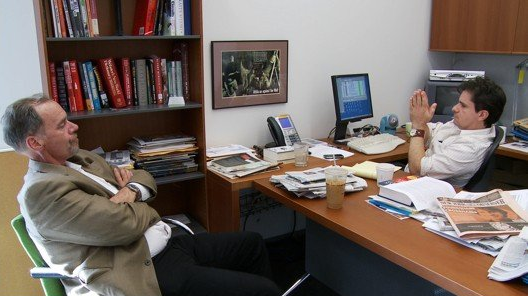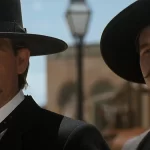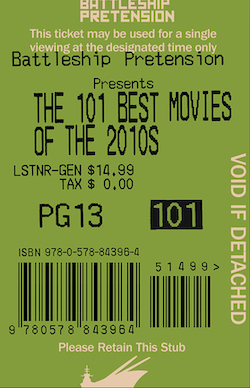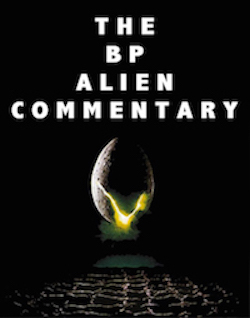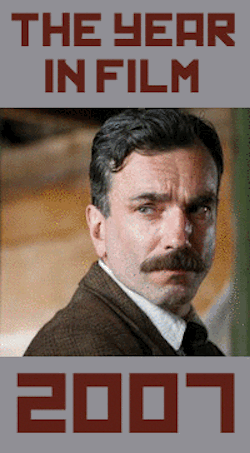A Cut Above the Fold, by Jack Fleischer
Great movies get people excited; great documentaries get people to take action. Page One: Inside the New York Times is a documentary that gives new life and personality to the “old” gray lady, and the morning after seeing this film I went and bought a New York Times. In some ways this documentary is a feature-length ad for the newspaper … and it works.
The film’s tagline seems to imply that the doc will examine the paper itself, showing the day to day of how the paper works. While it does do this to some extent, this film is primarily a defense argument for the Fourth Estate, against the up and coming “4th Est8.” Which side will win the hearts and minds of future newsreaders?
Fittingly, the film opens on reams and reams of paper being shuttled around the basement of the huge standard print mechanism that is The New York Times. To quote Times Media Editor Bruce Headlam, “Trees are still cut, and papers are still delivered.” Director Andrew Rossi and his co-writer Kate Novack underscore the fact that while this is partly a battle of formats, the bulk of the debate really comes down to whom will we trust to inform us.
Can we trust the Internet to supply us with the news?
Over the course of the doc we meet a number of people on the Times staff, including (now former) Executive Editor Bill Keller, but the heart of the movie comes from Headlam’s media department, most notably media reporter Brian Stelter and media columnist David Carr.
I have no idea if Rossi and Novack started with Carr in mind as their focal point, or if he just became the star over the course of filming, but he becomes the geeky newspaper equivalent of Yoda, Obi wan, and Luke rolled into a singed-at-the-edges-but-loveable curmudgeon. The man appears bent and weathered, but as a reporter he moves sleeker than a samurai. I am unashamed to say that I now love him.
It’s at the media desk that the Times is covering its own (potential?) decline. Along with following Carr around as he digs for the straight dope on the media business, the documentary supplements his work with interviews with folks like Jimmy Wales of Wikipedia and Gawker’s Nick Denton. While the documentarians didn’t get direct on-camera contact with Julian Assange, the WikiLeaks/Times partnership is also covered here in depth.
Along with Keller, Headlam and Carr, there’s the young-gun/outsider-on-the-inside reporter Jason Stelter, who built his career outside the traditional newspaper system. Now a part of the old guard, he hasn’t lost his roots. He puts forth very directly that any journalist not on twitter is a fool, and he juggles more screens at his desk than the “Architect.”
It’s interesting to note that even the salty and stalwart Carr (author of the January 2010 piece “Why Twitter Will Endure”) seems to concede that compromises in reporting will need to be made. But, will they be the right concessions? Will they be made fast enough? Will the changes be in the right areas?
Page One doesn’t claim answers, but it does shine a new light into an old institution, and it will have people picking up newspapers, at the very least to determine if they’re institutions worth fighting for.

